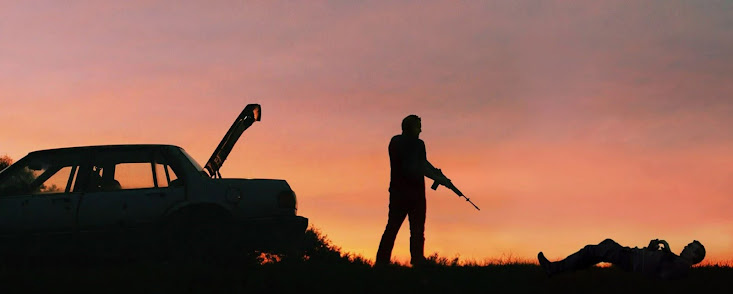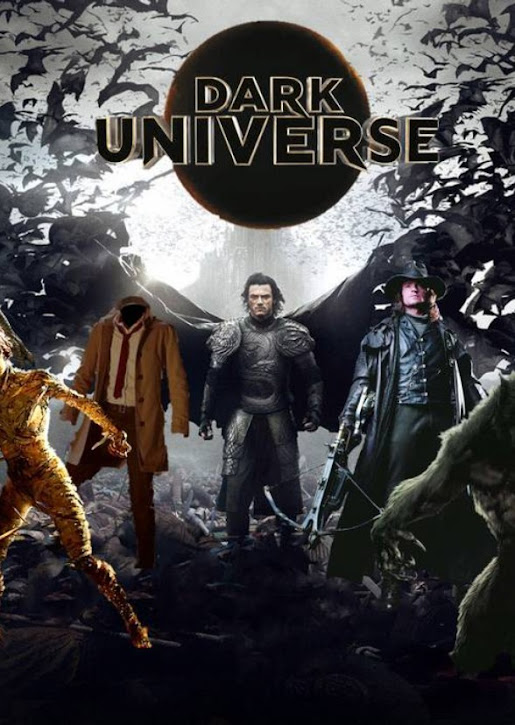Film Noir #15
Noir: The Blue Lamp, A Blueprint for Murder, and Blue Ruin
THE BLUE LAMP (1950) --- Lovely evocation of London life even as it cries against crime let loose by permissiveness after the war and youth ratching up violent acts to seize good things from austere surrounding. That last is everywhere present --- buildings with sides bombed out by the Blitz and still unfixed, meat doled as if war were still on. It was in a sense, because few had other than essentials to survive, many hardly that, result which youth like Dirk Bogarde (first impression-making part) robs jewelers, guns a likeable copper (we’re shocked to see rooting interest Jack Warner shot so casually, then dying in a first half). Bernard Lee oversees underpaid force that doesn’t carry weapons, it being policy then. Uniforms are worn by middle-age plodders seeing to gardens during off time or callow boys barely out of public school. A bad one like Bogarde startles the more for viciousness in the face of such gentility. The Blue Lamp is noir because although they don’t initially seem so, these are mean streets, and people’s desperation, if quietly expressed, is still desperate. The US never felt war on home ground, let alone homes fallen down around us, but Brits … that’s all they knew, and for years … so continued austerity, cruel as it was through much of the fifties, was something most could adjust to, it representing little that was change. At least bombs stopped dropping. Imagine if spoiled Yanks ever had to confront reality like this. I need to remember The Blue Lamp next time they don’t have my preferred brand of pimento cheese at the supermarket.
A BLUEPRINT FOR MURDER (1953) --- Seems a lot of poisonings were committed, and gotten away with, at least up to 1953. A Blueprint for Murder reveals alarming statistics. I was frankly shocked. Did beautiful women oft-off excess acquaintances and come away unscathed, theory being that with enough looks and charm, no one will order an autopsy, let alone ask probing questions? I only know arsenic has the odor of bitter almonds because Sherlock Holmes told me so. A Blueprint for Murder was among final flat Fox releases, and black-and-white besides. It and Dangerous Crossing were two peas in a pod for mutual borrow of Titanic sets, A Blueprint for Murder using these for a third act where Joseph Cotten finally unmasks murderess who is Jean Peters, hardly a reveal as he is on to her early and there are no viable suspects otherwise. Grim premise has Peters doing in a child with strychnine, measure seldom taken by Fox ingenues. Did this amount to studio writing on walls for Jean Peters, if not others of 40’s sorority soon to be let off contracts? Negative cost for Blueprint was $625K, surprising to be that much, being all shot toward four corners of varied rooms but for production value borrowed off Titanic. By way of how bad things got before Cinemascope, A Blueprint for Murder saw but $518K in domestic rentals, plus paltry $343K from foreign. Zanuck and Skouras were long aware that minus strong offshore support, no Fox release could break even, which indeed Blueprint did not (loss: $124K). Still engaging for its 77 minutes, quench of noir thirst via off-cast Peters as a blackest of widows, Uncle Joseph Cotten having to somehow prevent it. Shades of Gene Tierney similarly disposed in Leave Her to Heaven, except Peters gets a bravura speech where it looks to a last moment like she’ll go free. Writing and direction comes courtesy Andrew L. Stone, who had clever ideas here. A Blueprint for Murder streams on Amazon in HD.
BLUE RUIN (2013) --- One must be of stern stuff to get through modern noir. This one scared me more than horror films might. Like dark cinema in an age where it seems virtually all cinema is dark, Blue Ruin tells a story without vestige of hope or humanity. Are we now given to such outlook? If so, Blue Ruin is amusement rich deserved by a here and now, though like cobra snakes with pretty color, latter-day noir engages as would strangulation from behind. Pain can be ungodly, but you sure focus on it. Blue Ruin takes revenge account and how horribly wrong that can go. When even Blue Ridge mountains in Virginia look blanched and depressing, you know there’s a sick pup at controls, in this case one Jeremy Saulnier, talent to draw notice where work is so efficient, but then I see he has completed but two features since Blue Ruin. Back in the day, such writing/directing would put him at grist for three features at least per annum. Even quiet, especially quiet, scenes in Blue Ruin are laden with dread. Horrific things happen and we don’t get notice enough to shut eyes. When did noir get like this? I guess after every ounce of studio glamour was sapped finally out. Piece of mind demands more the old way, even as I realize such has fast passed, gone for good. No call then to complain how noir, or movies overall, “go too far.” Well-constructed as Blue Ruin is, that being what is most insidious about it, can make for troubled sleep. Your mileage will vary according to temperament. Some still are accustomed to gentler noir as practiced through a Classic Era overseen by the Code. People imagine everything old was spoon bread. Insofar as movies, you could argue that, but look at other arts dating back further. So much traded on cruelty and violence likes of which we still approach tentative by comparison. Many raised on even vestige of the Code, or “Standards/Practices” as ruthlessly enforced by television, find it tough coping with films unshackled as Blue Ruin, so it’s little surprise they'll retreat to comfort of a Double Indemnity or Out of the Past. Such familiars become more essential as nerve gives way to age.











































